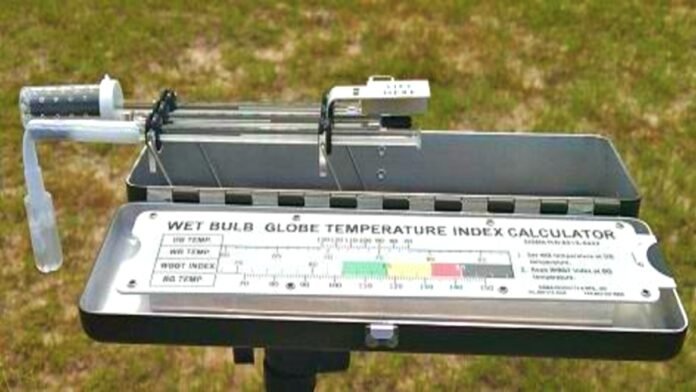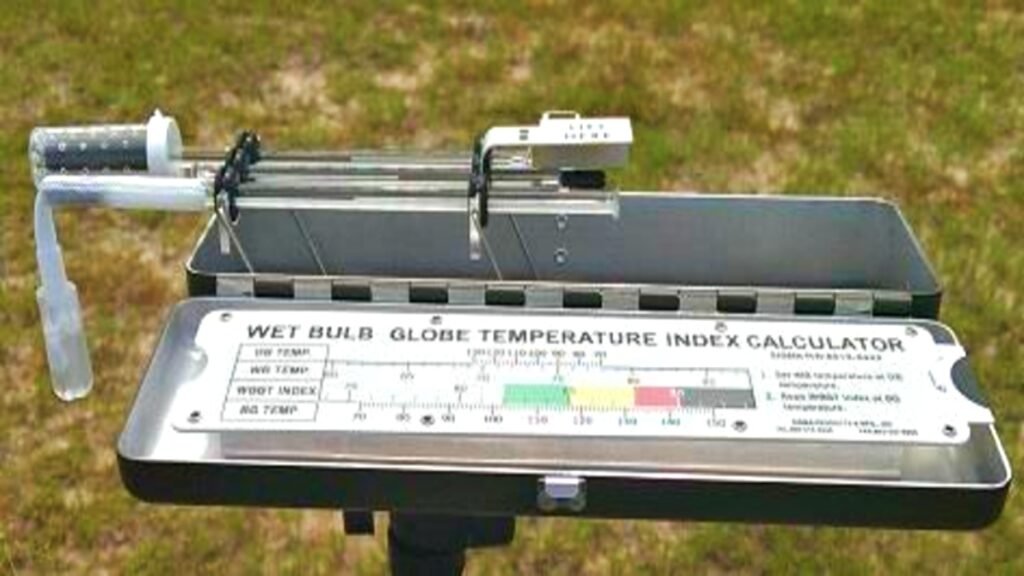
New Delhi: In the scorching month of May, India experiences a period known as “Nautapa,” characterized by intense heat. Some regions have witnessed temperatures soaring beyond 50 degrees Celsius, while others grapple with the relentless effects of the heatwave. Amidst this sweltering climate, the term “Wet-bulb Temperature” has gained prominence. Let’s delve into what it entails and why it matters.
What Is Wet-Bulb Temperature?
Wet-bulb temperature represents a cutting-edge method for measuring environmental conditions. It combines both heat and humidity levels to provide a comprehensive assessment. By analyzing the balance between heat and moisture in the atmosphere, wet-bulb temperature offers insights into how humans and animals experience the weather. When the environment is humid, our bodies sweat, but the high humidity prevents efficient evaporation, hindering the cooling process.
How Does a Wet-Bulb Thermometer Work?
When the mercury climbs above 50 degrees Celsius during the scorching summer, a regular thermometer falls short in accurately gauging the temperature. Enter the wet-bulb thermometer a specialized instrument designed for extreme conditions. Here’s how it operates:
- Wet Cloth Covering: The wet-bulb thermometer features a mercury-filled bulb covered with a damp cloth. Typically, a muslin cloth is used, which remains moist throughout the measurement process.
- Immersed in Cold Water: The thermometer is immersed in a vessel filled with cold water. As the water evaporates from the wet cloth, it cools the mercury inside the bulb.
- Reading the Temperature: The wet-bulb temperature reading reflects the combined effect of heat and humidity. It provides crucial information for determining appropriate precautions and routines during extreme heatwaves.
India’s Battle with Extreme Heat
Compared to other countries, India faces a more pronounced impact from heatwaves, especially in May. Notably:
- Phalodi, Rajasthan: Phalodi, located in Rajasthan, claims the title of India’s hottest place. Here, temperatures can soar to a blistering 51 degrees Celsius during the summer months.
- Churu, Rajasthan: Churu, another city in Rajasthan, has witnessed temperatures reaching 50.2 degrees Celsius. The intense heat puts immense strain on the human body, jeopardizing vital organs such as the heart, lungs, and kidneys.

As India grapples with extreme heat, understanding wet-bulb temperature becomes crucial. By factoring in both heat and humidity, we can better prepare for the challenges posed by scorching weather. Whether it’s adjusting daily routines or safeguarding vulnerable populations, this innovative measurement helps us navigate the heatwave season more effectively.







































